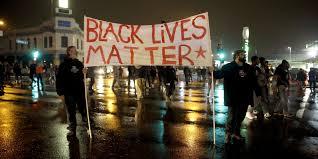Dear Superintendent Ed Hightower:
It’s me, Melissa.
I know it’s not easy helping teachers to help students navigate the emotionally-charged events that unfolded in Ferguson. And it’s not like there is a ready-made curriculum for racial justice. One Alabama teacher has already shown how misunderstanding how to teach Ferguson can go horribly, horribly wrong. But it is crucial that you make the effort.
Because the classroom is exactly the space where young people should be examining their assumptions, exchanging ideas, and engaging in democratic deliberation over the complicated questions of race invoked by the events in Ferguson. Fortunately, Twitter has already provided teachers with a great headstart with the #FergusonSyllabus hashtag.
Educators around the country are using the hashtag to share resources–readings, topics for discussion, and activities to help students at every grade-level join meaningfully in the national dialogue about Ferguson. And Ed, I’d like to add to that list, and offer your teachers a few syllabus suggestions of my own.
History teachers looking to spark a dialogue about the complicated relationship of African-Americans to their American identity will find an invaluable assist in the words of Frederick Douglass from his 1852 speech making the case for abolition, “What to the Slave Is the Fourth of July?”
English classes can spend an entire semester reading Richard Wright’s Black Boy, and discussing how Wright’s reflections of his early life in the Jim Crow South still resonate today in the lives of Michael Brown and the protesters in his community.
In social studies, teachers looking to help students make sense of the activism in response to Brown’s killing can use PBS’s documentary about the murder of Emmett Till to get them thinking about how a single death can launch a movement.
Science teachers may want to consider sharing this historical document with their students. In his 1851 article, Dr. Samuel Cartwright, at the time a widely published and well-respected doctor, discusses his discovery of “drapetomania,” a mental disorder he claimed caused slaves to run away.
After reading the article, students can explore the history of scientific racism, and how it continues to influence our thinking even today.
Now, some students may already be engaged with hip-hop music’s exploration of racialized violence. But music teachers can help them trace these themes across decades and genres of music by having them listen to and discuss everything from Public Enemy’s “Fight the Power” to Billie Holiday’s “Strange Fruit.”
So, see, Ed? There’s no need for your teachers to change the subject. Because what we do as teachers is to offer guideposts, context, and space for disagreement. We can teach our students not to be afraid of the unknown and the complicated, by confronting the hard topics as well as the easy.
Now is the time to teach, not to hide.
Sincerely,
Melissa
















